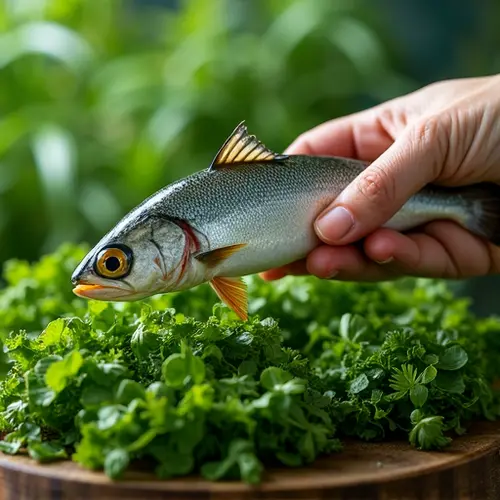Plant-based seafood brands are adapting regional Asian flavors to capture growing markets, with Southeast Asia's market projected to reach $1.7B by 2025. Brands focus on authentic taste experiences while addressing environmental and health concerns.

Plant-Based Seafood Makes Waves in Asian Markets
The global plant-based seafood market is experiencing explosive growth, projected to expand from $475.3 million in 2024 to $7.87 billion by 2034, representing a remarkable 32.4% compound annual growth rate. This 1555% growth over the decade is now reaching Asian markets, where brands are strategically adapting regional flavors to win over consumers.
Market Expansion Meets Cultural Adaptation
Southeast Asia's plant-based protein market alone is projected to reach $1.7 billion by 2025, representing 25% growth from 2020 levels. Unlike Western markets, Asian consumers already have familiarity with traditional plant proteins like tofu, tempeh, and seitan. However, the key challenge remains creating authentic flavor experiences that replicate traditional dishes.
'62% of Asian consumers cite sensory experience as the primary barrier to plant-based adoption,' according to flavor experts at VKA, who leverage 50 years of flavor expertise to address regional taste preferences.
Regional Flavor Strategies
Brands are taking distinct approaches for different Asian markets. For Indonesian consumers, companies are focusing on rendang and satay flavors, while Thai consumers are being targeted with tom yum and basil chicken profiles. Malaysian consumers respond particularly well to kokumi notes in curries.
The technical solutions include masking technologies to eliminate off-notes and flavor enhancers to amplify desired taste profiles in plant protein bases. 'The challenge isn't just creating plant-based seafood—it's creating plant-based seafood that tastes like the dishes people grew up with,' explains a food technology specialist working in the region.
Leading Brands and Market Dynamics
Good Catch Foods leads the category with its fish-free tuna and salmon pouches, while New Wave Foods is expanding plant-based shrimp distribution. Impossible Foods is gaining visibility through cross-category promotions, and Ocean Hugger Foods has re-entered retail with premium sushi-focused products.
The Asia-Pacific plant-based seafood market addresses multiple consumer concerns simultaneously. Growing environmental awareness, health consciousness due to mercury contamination in traditional seafood, ethical considerations about marine life treatment, and supportive government initiatives are all driving adoption.
Challenges and Opportunities
Despite the promising growth, challenges remain in achieving authentic taste and texture, limited consumer awareness in some markets, price sensitivity, and supply chain constraints. However, major opportunities exist in diversifying product offerings—from fish fillets and shrimp to crab alternatives—and through collaborations with foodservice providers.
The region shows varied adoption patterns, with China and India representing significant markets due to their large seafood consumption and predominantly vegetarian population respectively. 'We're seeing particularly strong interest from younger consumers who are both health-conscious and environmentally aware,' notes a market analyst covering the Asia-Pacific region.
As retailers increasingly integrate plant-based seafood into mainstream aisles rather than vegan sections, the category is positioned to capture the growing flexitarian market across Asia. With continuous product innovation and expanding retail availability, plant-based seafood appears poised to become a significant segment in Asia's rapidly evolving food landscape.

 Nederlands
Nederlands
 English
English
 Deutsch
Deutsch
 Français
Français
 Español
Español
 Português
Português









